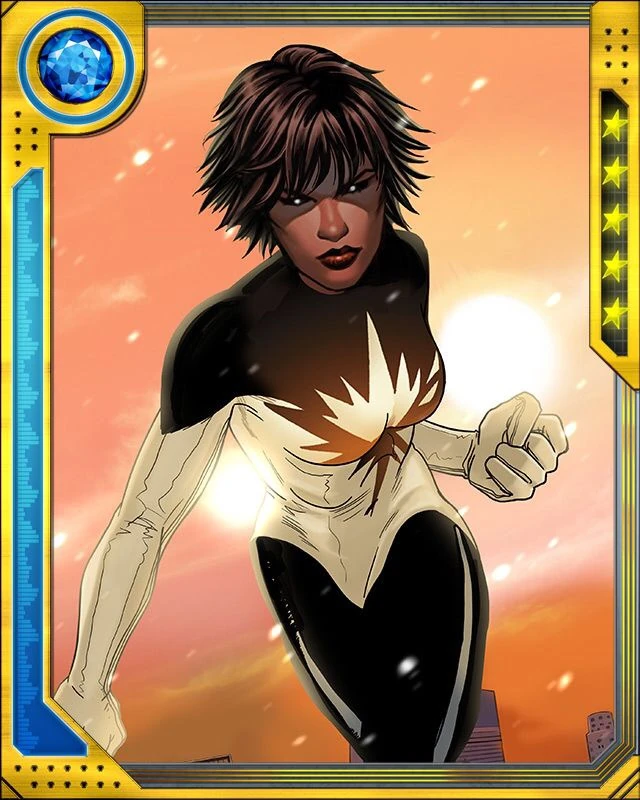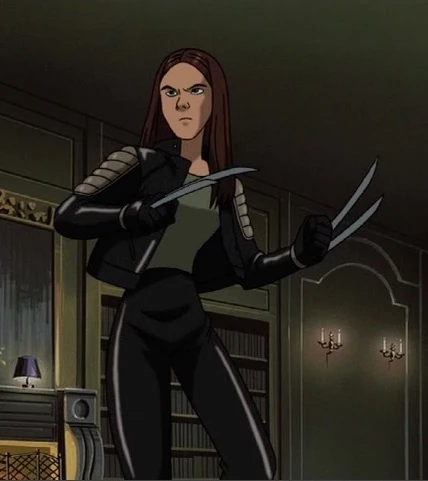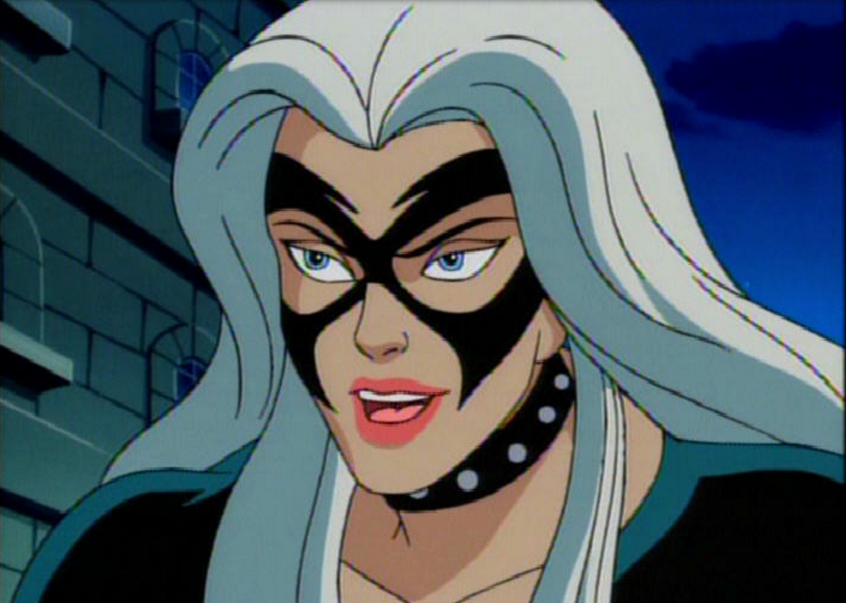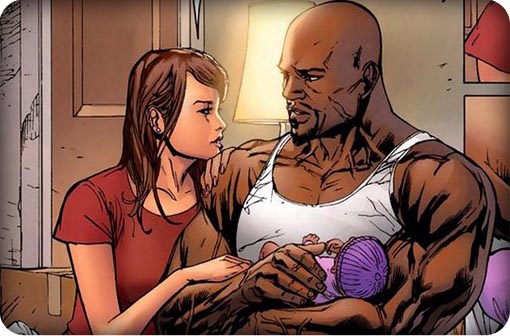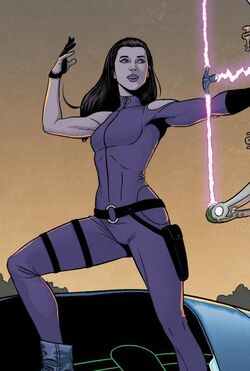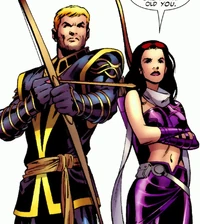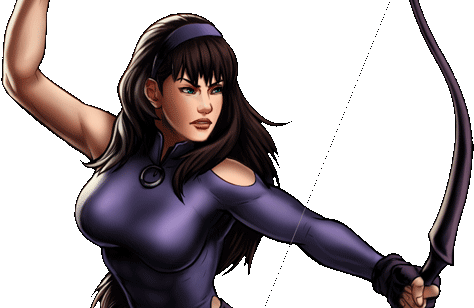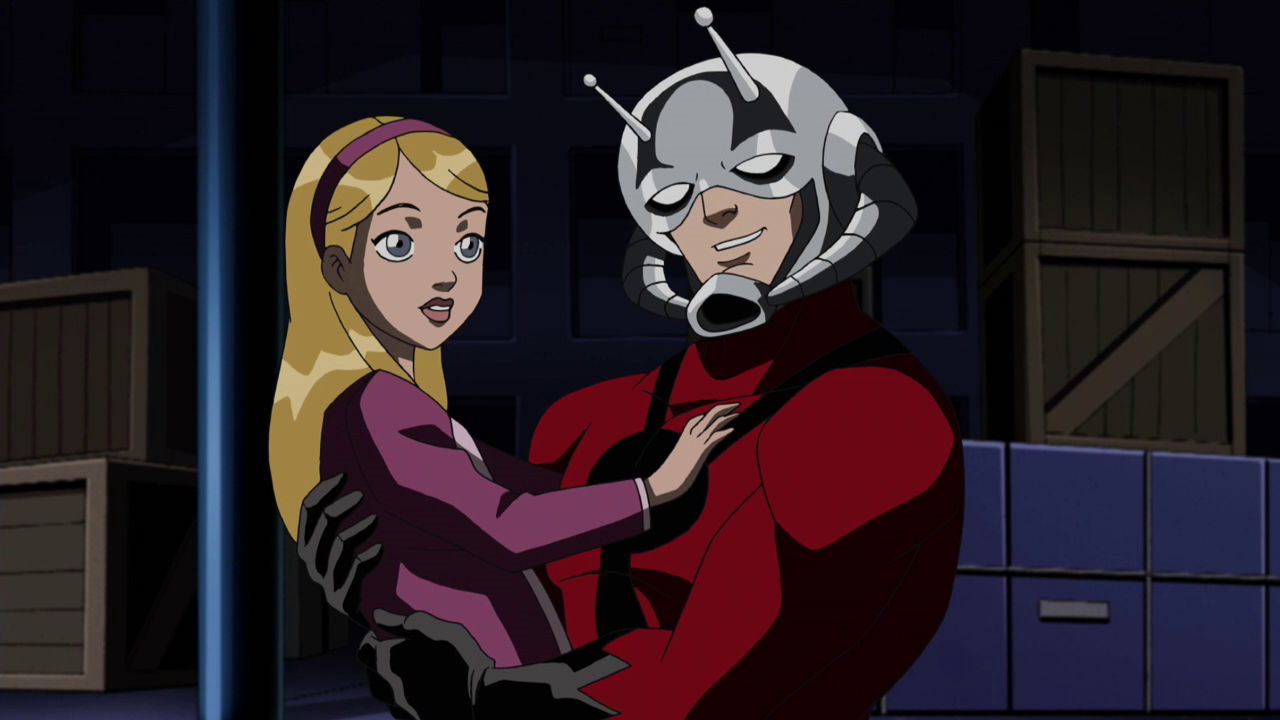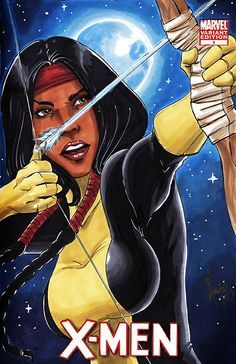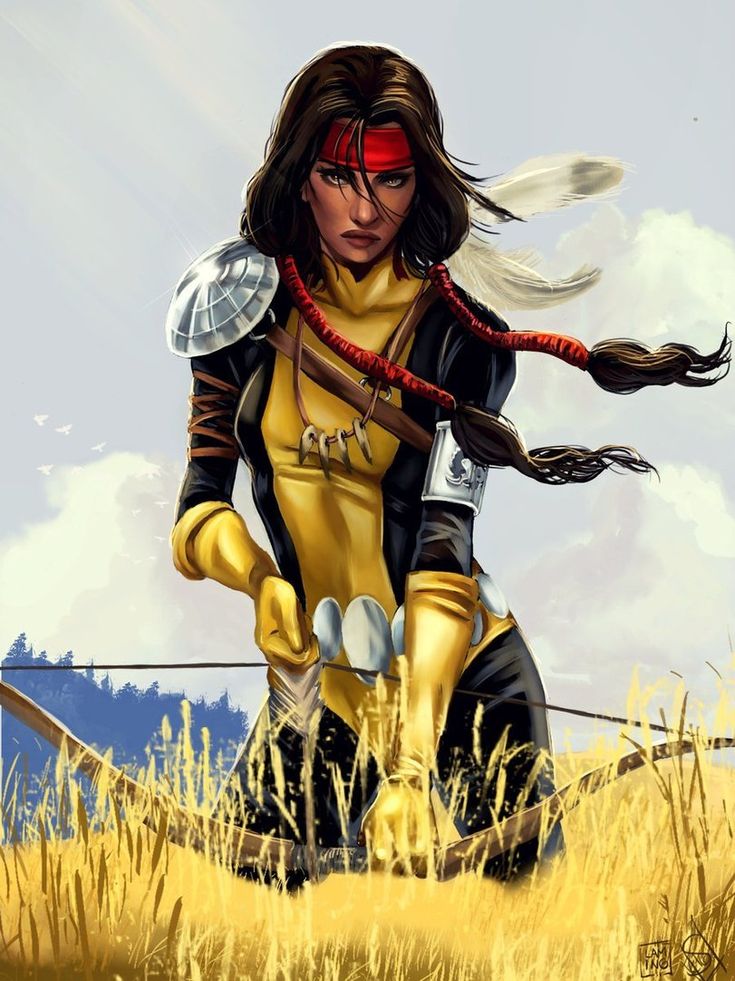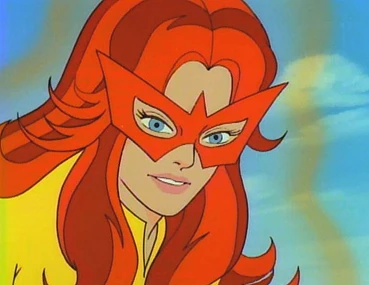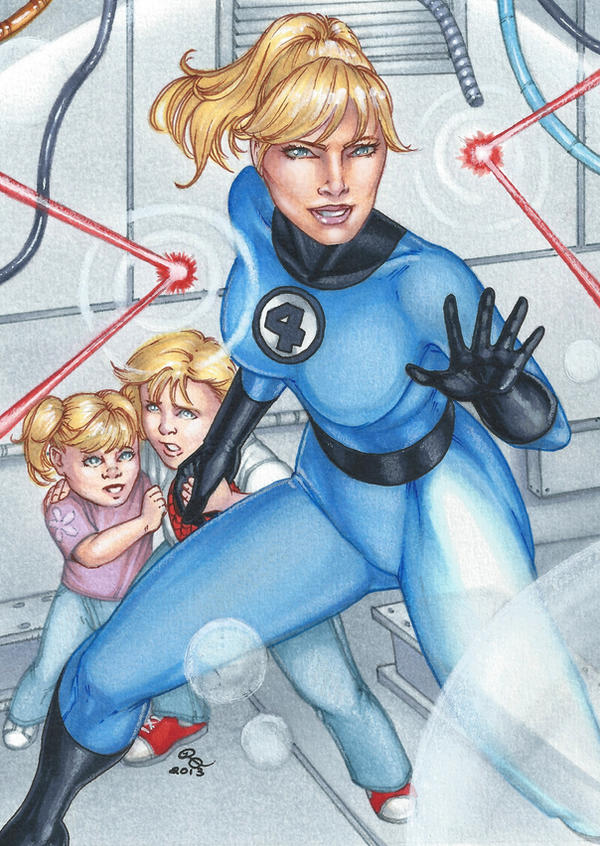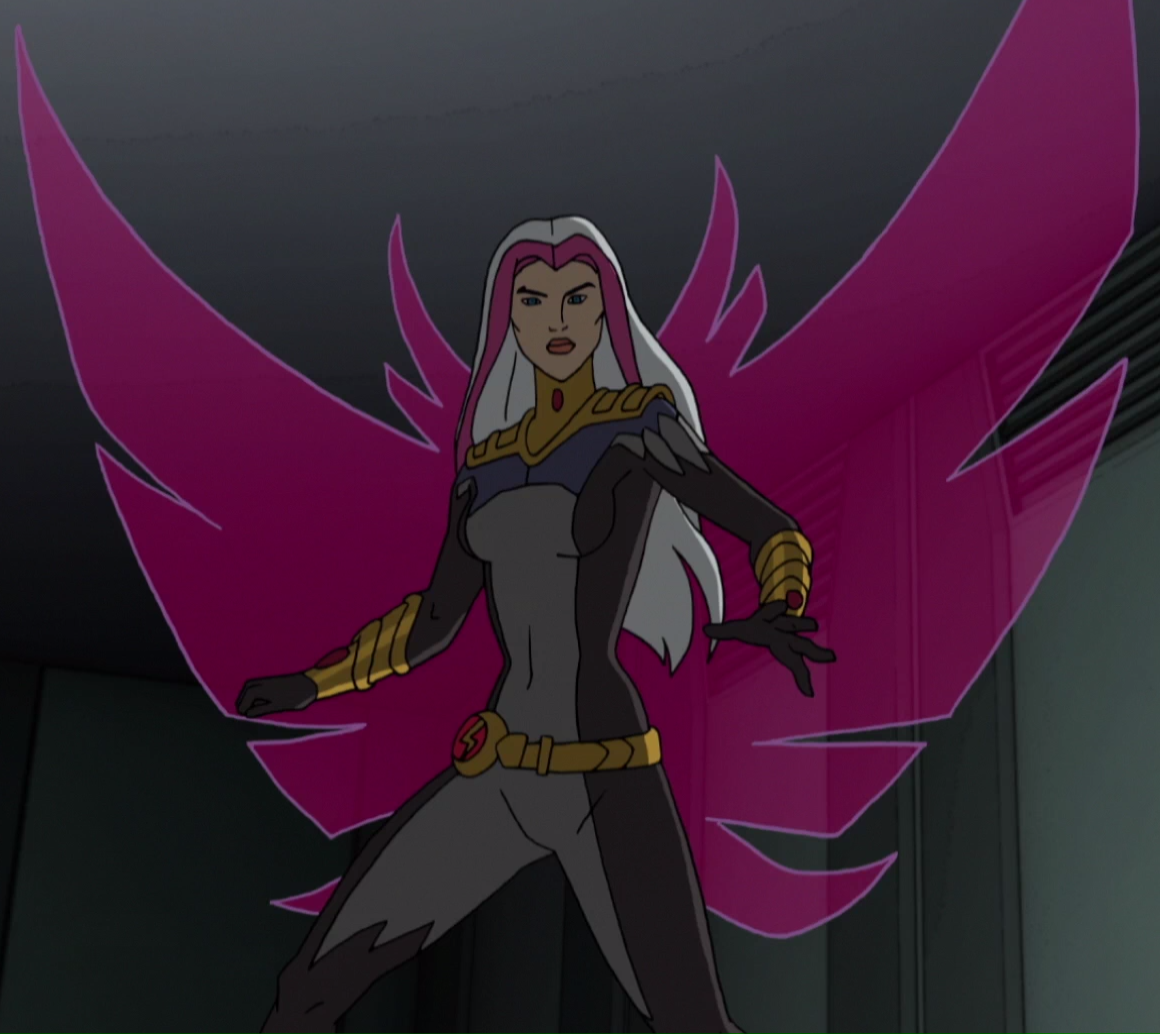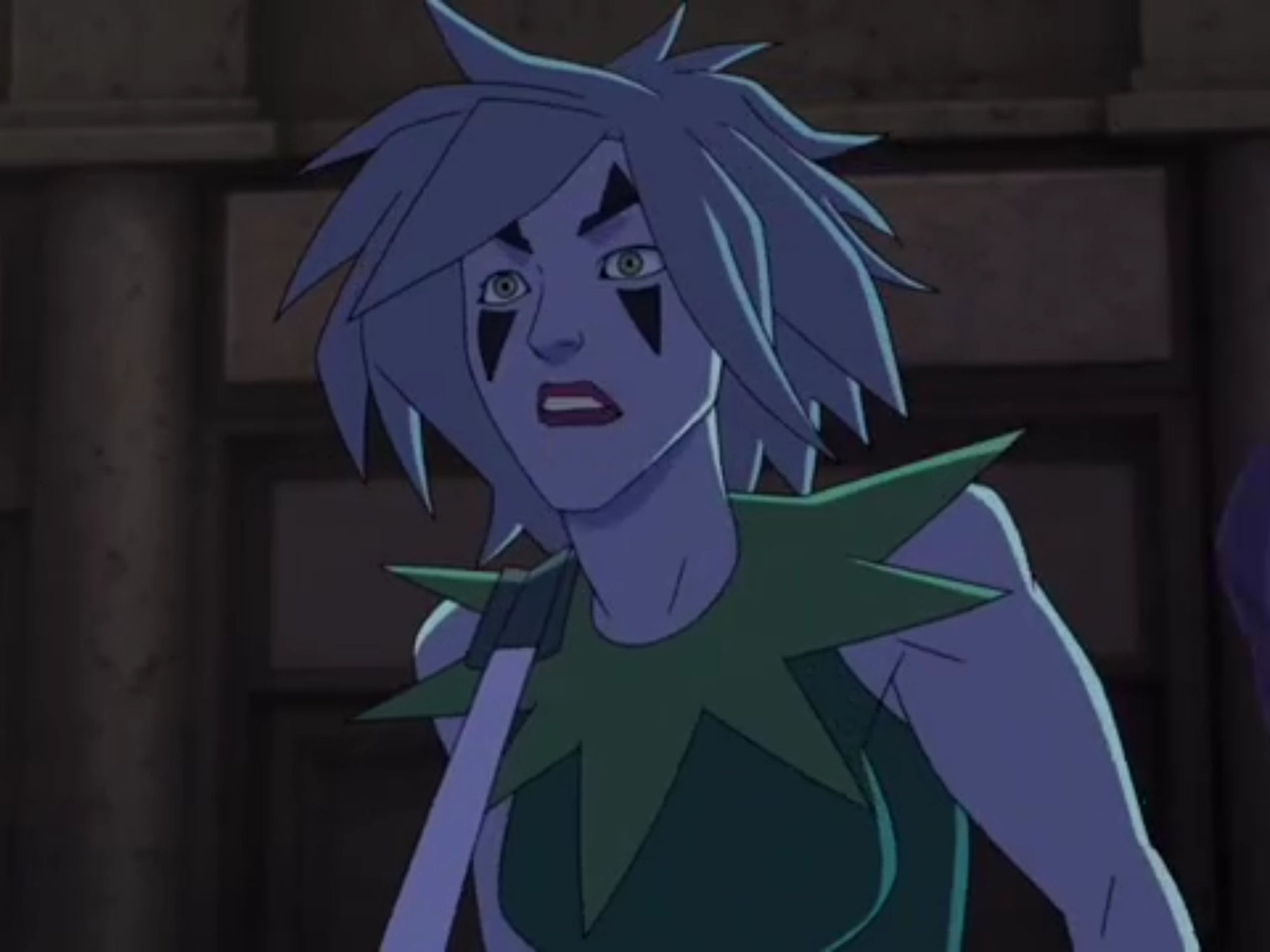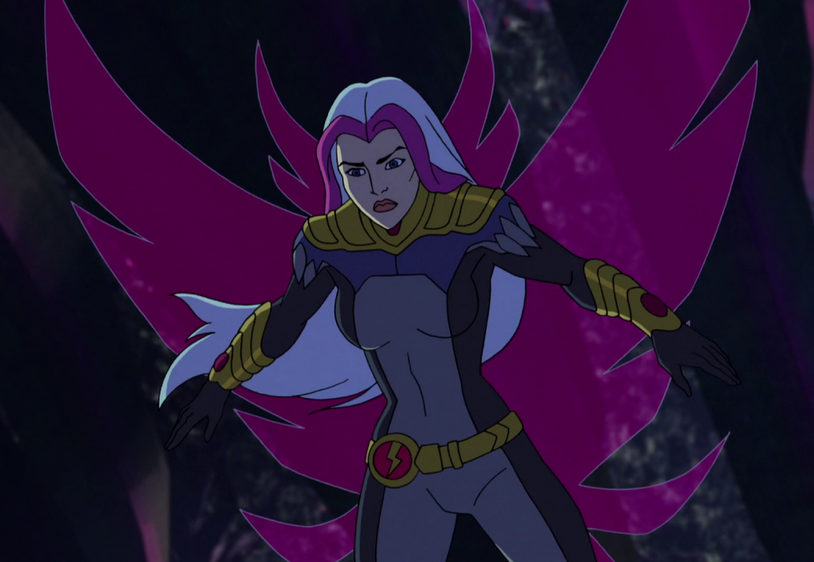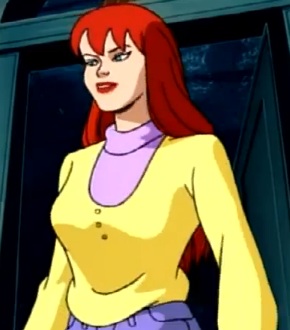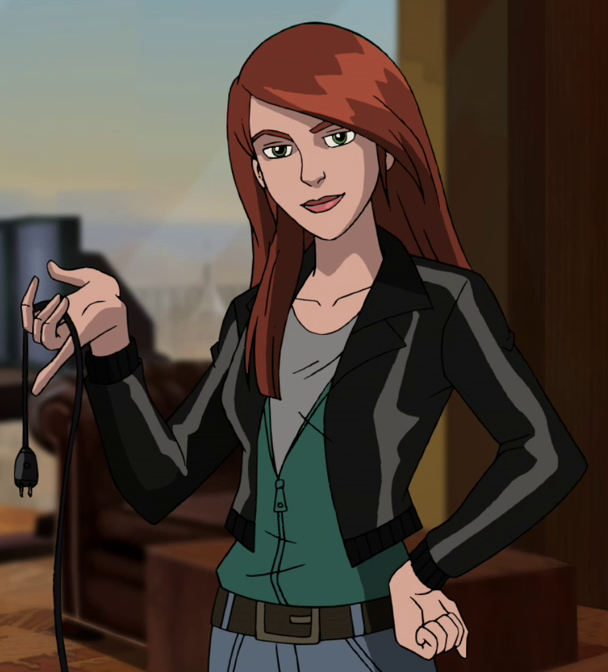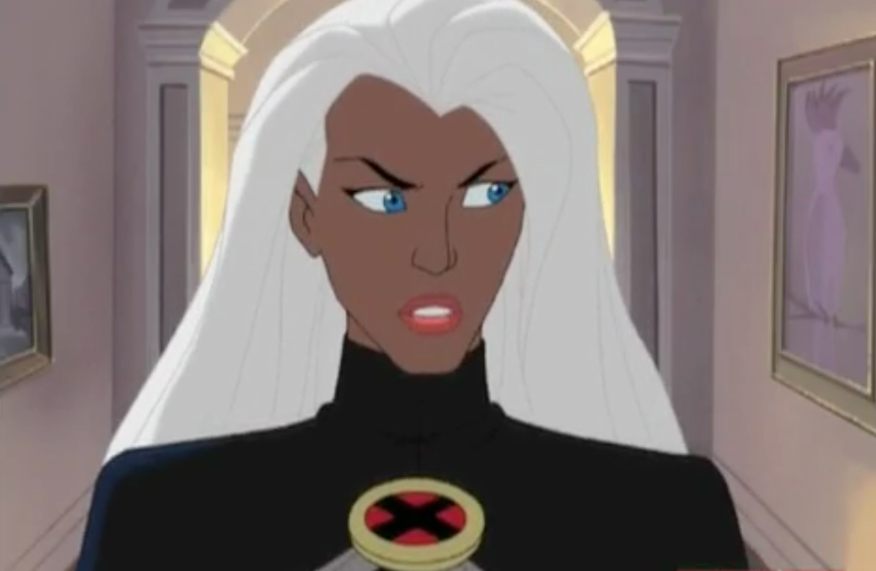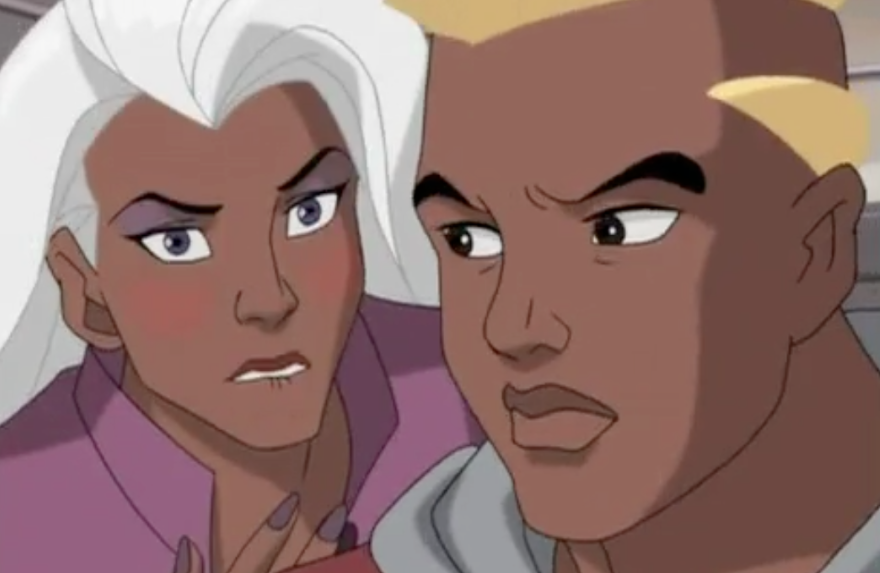Yesterday, I posted an article listing the names and histories of several lesser known, unrecognized, and underappreciated Marvel heroines. Too many people now are whining about the “lack” of super heroines in comics and, quite frankly, they are crying over nothing. I can – and have – said this in previous posts, so I will not rehash it here.
But I will say that I am VERY tired of this collective moaning. There are hundreds of super heroines in comics. Marvel – which I prefer over DC, though they also have many heroines in their ranks – does not have a dearth of strong female characters. It has lived too long not to build up a roster of tough women in its universe(s) – whether they have powers or not.
These two articles endeavor to communicate this fact to the outside world. If you are going to see a superhero film in theaters, readers, take the time before or after to look up the source material for the movie. If you can do it for Downtown Abbey, Poirot, Hercules, Robin Hood, King Arthur and his knights, or even Percy Jackson and Harry Potter, then what is stopping you from doing it for Marvel’s films?
But I digress. Without further ado, here is some more comic book information for you to absorb, readers!
Spectrum/Monica Rambeau: A former policewoman and an active member of the New Orleans Harbor Patrol, Monica Rambeau was exposed to some kind of radiation on one of her missions. This gave her the power to turn her body into a beam of light, along with every known energy wavelength on the electromagnetic spectrum. She can use this ability to travel across the country or around the world at the speed of light, not to mention fly at roughly supersonic speeds in a battle. Her power to generate light energy means she can make impressive holograms of herself as well.
She can also shoot beams of light or energy from her hands, and is intangible when she assumes her energy forms. Monica can be seen when she turns herself into visible light, but when she becomes some other form of energy she is no more visible than air.
Monica had a hard time with her powers initially. She went to New York to make her name as a super heroine and was lucky enough to meet Spider-Man. He brought her to the Avengers so she could have some official superhero training. While she was there Captain America and the Wasp tutored her in combat and the use of her abilities. (To this day, Jan is one of her best friends.) Monica has also led the Avengers at least twice, maybe three times, in her career. Even now, she is a valued reserve member.
Because of her police training, Monica is a good markswoman, able to use many different kinds of guns. Since she works for the harbor patrol, she is also a strong swimmer, while her time in the police made her a good detective and leader. Cap’s training, combined with the skills she learned from the police and the patrol, make her a great hand-to-hand fighter who is hard to beat.
One of the heroines who had to go through several codenames before selecting Spectrum, Monica’s first nom de plume was Captain Marvel. But on finding that name already belonged to the Kree hero Captain Mar-Vell, she changed it to Photon. However, this call sign was taken, too, so she changed her nom de guerre again. She later learned this moniker was already in use by someone else, and so on and so forth. In frustration, Monica finally chose Spectrum on the spur-of-the-moment as her codename. It has managed to stick so far.
Like Firestar, Spectrum was relegated to limbo there for a while. Comics published prior to 2015 brought her into a few storylines and fights, but she is definitely one of Marvel’s most underutilized heroines. I do not know why they have not put her in the limelight more often; she is tough, smart, strong, and a good fighter. If I were working for Marvel, I would make her an active member of the Avengers on principle alone.
X-23/Laura Kinney: I am more familiar with Laura’s X-Men: Evolution history than her comic book backstory. But the general gist is that Laura, a.k.a. X-23, is a genetically modified clone of Wolverine.
Because of his healing factor, Wolvie’s DNA can remain stable enough for successful cloning – that is, his clones won’t up and die after a certain period, or physically destabilize and fall apart when they are killed. Those who attempted to clone Wolverine, however, still failed twenty-two times before they made some genetic modifications in their next attempt, which led to Laura’s birth. And yes, I do mean she was born. She didn’t come out of a test tube or a cloning cylinder, people. Laura had an actual, physical mother. Everything else about her life was messed up, but not that part.
Since she is Wolverine’s clone, Laura has his enhanced senses. She can smell, see, and hear as well as any predator on the planet. She also has a healing factor, just like Wolvie’s, except that hers works faster because she is younger than he is. Unlike Logan, Laura was born with two claws in each forearm and one in each foot, making her twice as deadly and dangerous as Wolverine is in close quarters. These claws were removed during an operation and coated in adamantium, the same metal Logan had forcibly bonded to his skeleton and claws at some point in his life. I think Laura has an adamantium encased skeleton, too, but I am not one hundred percent sure of that.
Laura’s life prior to meeting and joining her “father” was awful. Trained from infancy to be the perfect weapon, Laura knew next to nothing about social norms, family life and love, or friendship. It made her angry at her captors, at the world in general, and Wolverine in particular.
Once he learned about her, Logan did his best to take care of Laura, eventually bringing her to the X-Men. Having struggled during his career with the team over the same issues which Laura deals with, he has had to teach her about the good side of life from scratch. All of this made the dynamic between the two a lot of fun. But what I did not and do not like is the writers’ attempt to replace Wolverine with Laura in the post-2015 comic book stories.
I think Laura is a great character, readers. She would not be on this list if I hated her. I am all for having her go out on her own adventures, having boyfriend troubles, etc., but I do not want her to replace Wolverine. Logan is one of a kind, and there is no substitute for him. Giving Laura her own place in the Marvel Universe(s), while allowing her to occasionally go home and ask Dad for help (or just to spend some downtime with him), would be great. I am all for that.
But I do not want Marvel’s heroes feminized, and I do not want their heroines turned into men. I want their heroines to stand on their own two feet, to have their own careers (intertwined with the men’s whenever possible), and to kick butt their own way. They cannot do that if they are taking over for the guys, fighting the men’s arch-nemeses on equal terms, and trying to be something they are manifestly not.
Laura is not Logan, and I wish the writers would stop treating her as though she is. She may be his clone, but that does not diminish her own personality. The sad fact is that this person is someone the writers apparently do not want her to be.
Black Cat/Felicia Hardy: Technically, Black Cat is a qualified villainness. I did not know this for a long time because my first introduction to the character was the 1990s Spider-Man TV series. In that show, she was a heroine; in the comics, she has wavered back and forth.
Felicia Hardy is the daughter of a rich woman who somehow married a cat burglar. Mr. Hardy managed to keep his nightly work a secret for many years, but when Felicia’s mom finally learned the truth, she divorced him and he went to jail.
In the comics, Felicia loved her father so much she decided to imitate him. She started stealing by night, too, for the thrill of it rather than for the money. She took on the moniker Black Cat in honor of her father, who had been known as the Cat during his thieving days. To emphasize her namesake, Felicia rigged her original heists so that it looked like she could give the authorities bad luck. This is how Spidey met her; he later convinced her to give up her extracurricular activities and she went back to her rich lifestyle.
Unfortunately, somewhere down the line Felicia actually gained the ability to cause people bad luck. She became the Black Cat again and went back to stealing, though her attraction to Spider-Man means she has put herself in harm’s way or done heroine work to help him from time to time.
During the ‘90s cartoon, Felicia did not gain bad luck abilities. Her father was a cat burglar in this series, too, but he was convicted and sent to prison when she was really young. This meant that she did not remember him or his work very well, although she definitely still loved him a great deal.
What no one knew until the Kingpin got his hands on Mr. Hardy in that series was that Felicia’s father had been a spy while a boy during World War II. Hired to find out about the Nazi’s Super Soldier program, Mr. Hardy memorized the formula for the serum that was used to give Red Skull and Captain America their powers. But to his surprise, the test subject for the project he was spying on was not given the paraphernalia of a Nazi collaborator. He was, instead, given a suit and shield bearing the stars and stripes!
Figuring out that he had been duped, Mr. Hardy ran away from his employers without giving them the information they sought, making Red Skull kind of angry. Years later, he still remembered the serum formula perfectly. The Kingpin wanted the serum, so he sprang Mr. Hardy from jail at the same time he kidnapped Felicia. To make sure he got the real formula, the Kingpin warned Mr. Hardy that the juice would be used on his daughter once it was complete. Unable to harm his daughter, Mr. Hardy complied with the Kingpin and gave him the real Super Soldier Serum.
Black Cat was thus born. In the series, she went on to become a vampire hunter with Blade and her boyfriend, a near-vampire named Michael Morbius. (She had odd taste in men, what can I say?) Despite this, Felicia still had a thing for Spidey, and he knew he could rely on her if he needed help. I have missed this characterization of her ever since.
Silver Sable: I do not know a lot about Silver Sable. From what I recall reading about her, she is royalty of some kind and rules a country in Eastern Europe. I think it might be next door to Dr. Doom’s residence, Latveria; she has had diplomatic dealings with him on a couple of occasions.
Despite her status, Silver Sable has gone into the mercenary business. She leads a team of mercenaries called the Wild Pack. I do not know why she formed the team, nor do I know why she fights for money; all I know is that she does both these things. And she is very, very good at both her mercenary and royal jobs.
While I think the Wild Pack has had a shifting roster over the years, I believe that Sable has almost always been their leader. In addition, it must be mentioned that she has a cold personality. Sable has an emotionless attitude that can only be cracked when a member of her family is threatened. She reacts with wild, uncontrolled fury if someone related to her is harmed or put in jeopardy.
Although a mercenary, she has helped Spider-Man and, I believe, other heroes every now and then. That makes her a heroine.
Shuri: Shuri is King T’Challa/Black Panther’s younger half-sister. His mother died not long after he was born, and some time later his father remarried. Shuri was born to T’Chaka and his second wife, Ramonda. She has worn the mantle of the Black Panther a couple of times, substituting for her big brother when he could not carry the title himself for some reason.
Shuri and her big brother, King T’Challa/Black Panther
Beyond this, though, I am afraid that I cannot tell you much about her because Wakanda and its culture are out of my regular Marvel purview. I like T’Challa, but he’s about as far as I go when it comes to Wakanda. Things get confusing when I try to learn more about his country, so I haven’t looked it up thoroughly enough to understand it all. This includes learning more about Shuri – though from what I have read, she has never really had a big part in most of the Marvel Universe, which is a shame. From what I have discovered about her, she sounds really interesting.
Jessica Jones Cage: People will wonder why Jessica Jones Cage, wife of Luke Cage/Power Man, is on this list. Jessica has a TV series named after her and she features prominently in Netflix’s The Defenders series, so how can she be an under-used heroine?
Well, for a start, the writers for Netflix’s Jessica Jones seem to have completely misunderstood the character and her arc. Jessica was a normal girl who went to the same high school as Peter Parker/Spider-Man. She also had a big crush on him but, in a strange reversal of fortunes, he barely knew she existed. Then Jessica lost her family in a car accident, was adopted by another family, and went on to gain super powers. These included flight, relative invulnerability, and super strength. Ecstatic about her new abilities, she tried to get into the superhero world using the codename Jewel. She was convinced, however, to wait a while before becoming a full-fledged super heroine when her first attempt to save the day nearly backfired spectacularly.
Then things took a bad turn. Jessica was captured and enslaved by the Purple Man (so named because whatever gave him his powers also turned his skin purple). Purple Man is a telepath and, though he does not have great range, he can control people within a certain radius completely. Only people with very strong wills can refuse his control, and even they occasionally need help from outside sources to fight him off.
Purple Man was able to easily enslave and use Jessica – along with a number of other girls and women – for his “personal pleasure.” Then he found out about her powers and had her use them to his advantage as well. I do not remember if he had her kill someone in the comics like he did in the TV show, but I think that may be what happened.
Jessica was eventually freed from his domination by the X-Men (I think), who took her in to help her deal with the trauma as she realized how she had been abused over the years by Purple Man. Her best friend at the X-Mansion was none other than Jean Grey, who put psychic shields up in the younger woman’s mind to prevent Jessica from being easily controlled or manipulated ever again.
The reason Jean had to do this is because Jessica was one of the people in the Marvel Universe(s) who had no real ability to fight off psychic assault/control on her own. Most of the superhero community either already has enough willpower to eventually free themselves from mental manipulation or they gain this ability through experience over time (one of the notable exceptions to this rule is Carol Danvers, but that’s another story). Jessica was too young and inexperienced to fight telepathic control, which is why she was so vulnerable to Purple Man in the first place.
Although they helped her get back on her feet, the X-Men were not able to help Jessica heal completely. Gone was the optimistic, bright and bubbly girl who had tried to be the super heroine called Jewel. She was now a hardened, cynical woman who, after trying to be a super heroine known as Knightress, eventually gave up the idea of being a superhero at all. Instead she became an anti-social private detective prone to drinking. I do not remember exactly how they met, but Jessica encountered Luke Cage at some point and they had a brief fling. At least, Jessica considered it brief; Luke was quite smitten with her and came back to ask her for another date.
So it shows a lot about his character when he helped a stone drunk Jessica Jones home from a bar one night, only to learn from her that their fling had resulted in her becoming pregnant. Luke took the news in stride and decided he didn’t want Jessica for a girlfriend. He wanted to marry her.
It took a while for Jessica to come around to the idea. She had been abused, after all, and though she liked Luke well enough (while she was sober) marriage was a big step. But with a baby girl in her arms she had to come to a decision, and she decided to marry Luke Cage.
Of course, Purple Man chose this point to step back into her life, trying to make her his pawn once again by showing her visions of Luke cheating on her with her female friends. But the shields Jean Grey had put in Jessica’s mind helped her realize she was being manipulated and she fought back against his control. This time she won, putting him behind bars so she could finally close that chapter on her life and move on to a better place.
Jessica, Danielle, and Luke Cage
The Cage wedding went off without a hitch and, at least prior to 2015, Jessica was doing fine. She and Luke were raising their daughter, Danielle (named after Luke’s best friend, Daniel Rand/Iron Fist), and she had maintained her job as a PI. She also helped to counsel other girls who had been assaulted, such as Kate Bishop. She was, in my opinion, one of Marvel’s best poster characters for how to survive and thrive after enduring enormous pain.
The TV show threw this history out the window. In the Netflix series, Jessica is a jerk even before Purple Man takes control of her. From what I have heard, her character has practically no growth at all through the first season of her own show. She only gets to change in The Defenders, which is a real shame. Jessica Jones Cage is not my favorite Marvel heroine by a long mile, but I certainly thought she was interesting and had a compelling story in the comics. New comics and her own TV show, however, have reduced her to a “really dark, really noir” character who does not grow or change at all, but who remains mired in the “oh woe is me, the world sucks” swamp. Jessica deserved far better than that, readers, which is why she makes my under-used heroines list.
Kate Bishop: Kate Bishop is one of the three “Young Avengers” I actually had an interest in. While I consider the premise behind their team’s appearance in comics more than a little stupid, Kate and her boyfriend, Patriot/Elijah Bradley, were still characters I found interesting. (The third Young Avenger I liked is listed below.)
From what I remember reading about Kate, her mother died when she was young. Her father was very involved in his business dealings (Kate and her family cannot afford fifty private jets, but they are well off), and so he never really got to know his daughters. Kate has an older sister who mothered her while the younger woman was growing up, before marrying and leaving the house. Last time I checked, she and Kate were still on good terms.
Assaulted in Central Park when she was fifteen or a little younger, Kate started taking classes in self-defense and weapons’ training to avoid ever being a victim again. This eventually allowed her to take up Clint Barton’s bow and quiver when the Young Avengers were established. She is also proficient with battle staves like the ones Mockingbird uses, as well as swords and a variety of other arms.
If none of this was enough, it was revealed at some point that Kate has a photographic memory and photographic reflexes like Marvel’s Taskmaster. These reflexes work in the way that her memory does; Kate can watch someone pull off a flip, tumble, punch, etc. and do the same move perfectly herself. This trait, however, does not reach superpower level in her as it does in Taskmaster. On top of all this, she is a skilled cellist.
Kate took to super heroine work like a duck to water. She is feisty and fiery, which meant that it made sense for her and Clint Barton to get along. It did not hurt that she had taken everything but his codename when she joined the Young Avengers, of course. The writers made it blatantly clear that the two would have some kind of relationship in the future.
Clint did eventually take Kate on as a student, the way most of us thought he would. The two worked together for some time in the comics before going their separate ways in Matt Fraction’s Hawkeye series, although Clint still lets her use the Hawkeye moniker along with him. I am not pleased with how their story arc was finished. Not at all.
See, Clint was the perfect surrogate father for Kate, whose frosty relationship with her real dad left a painful void in her life. She needed a strong man supporting her, especially after being raped in Central Park at the age of fifteen. Her biological father was not filling this role, making this the perfect opportunity for the writers to set Kate and Clint up in a father/daughter relationship like the ones Wolverine had with Kitty, Rogue, Jubilee, and later Laura.
But if my information is correct, the writers wasted their opportunity. They also, typically, have worked to replace Clint with Kate, to which I say no, No, NO, and NO!!!! (For Pete’s sake, to make her reach his level of physical strength, you had to give her Taskmaster’s photographic reflexes, Marvel writers! Do not tell me she is the physical equal of Clint Barton. She is manifestly not his equal when it comes to strength – and I was totally okay with that! You did not need to pull this stunt to make me like her more!)
Pardon that interruption, readers, but it needed to be said. I like Kate as a character; she would not be on this list if I thought she was a horrible addition to the Marvel Universe(s). I loved the idea of Clint fathering her, growing because of his care for and attachment to her as a daughter figure. I loved the idea of Kate becoming a worthy super heroine because of his mentoring, too. But anything outside of that which goes on to have her replace him in the comics does not fly with me – period.
This is the reason why I wish the writers would give her a codename of her own, instead of leaving her to use the Hawkeye call sign in conjunction with Clint. Kate Bishop is NOT Clint Barton; she deserves to make a name for herself which belongs to her alone, like Atalanta or Diana or something. She deserves to be a heroine in her own right, independent of Clint Barton but with the ability to go to him as a father figure in times of extreme need. The writers have not done that for her or for him, and it bugs me.
Another area where the writers disappointed me is how they handled Kate’s budding romance with Patriot. I thought it was a sweet touch to the two characters and that it meant we would see them go lots of interesting places together. Instead, the writers put the kibosh on this and went on to treat both these new characters like trash. It was poor storytelling all around, and it has only gotten worse with the passage of time.
Stature/Cassie Lang: For those who do not know Ant-Man/Scott Lang’s history or who have not seen the film bringing him into the MCU, Scott is one of the few Marvel superheroes who got to have a child. He had Cassie before he entered the superhero gig, but even after making Avenging and saving the world his 24/7 job, he managed to block out plenty of time for his daughter.
Cassie and her dad, Scott Lang/Ant-Man
If anything, his new career choice made Cassie love him ten times more than she already did. In the comics, Cassie was born with a heart condition that would have killed her. Desperate to save her, Scott fell back on his skills as a burglar to get enough money for the surgery necessary to save his daughter’s life, stealing the Ant-Man suit to do the job. This put him on the Avengers’ radar, and not in a good way. But once they learned the reason behind his actions, they cut Scott some slack and offered to teach him how to use the suit – after helping him take care of the bill for Cassie’s surgery, of course.
This put Cassie in touch with the superhero community at large. She was on such good terms with it, in fact, that she could blithely call Iron Man “Uncle Tony” and jump into his arms whenever he dropped in to see her father. When Scott died in the Avengers: Disassembled and House of M storylines, Cassie was determined to take up his mantle in order to honor him.
Acquiring shrinking and growing tech of her own, she became a founding member of the Young Avengers, using the codename Stature. (See, this is what legacy characters should do; find their own monikers, paths, and suits, while at the same time honoring their predecessors/mentors/fellow heroes and heroines. Why do the writers keep throwing this understanding in the garbage?) Cassie quickly proved to have her father’s mettle, along with the smarts necessary to fight big time and small time crooks. Unlike her dad, she focused less on shrinking and more on growing, making her a tough target to bring down.
During her time with the Young Avengers, Cassie dated a rebuilt Vision and a teen Kang the Conqueror. (Really, Marvel writers? You truly could not find her a boyfriend who did not have a history with another girl or who wasn’t a proto-power mad tyrant? Grrr….) She got on well with her other teammates, too, acting as something of a grounding/peacemaking force in the friction-filled atmosphere among the Young Avengers. After Vision, she was the Young Avenger most qualified to directly jump into full-fledged Avenger status.
Sadly, Cassie’s career as a super heroine did not end well for her. She got to go back in time to save her father, only to die herself some issues later. To the best of my knowledge, that is where the writers left her. And yes, I think this is totally unfair not only to Cassie, Scott, and the entire Marvel Universe(s), but to us fans as well. We were robbed of a great legacy heroine for no good reason. I wish they would bring Cassie back (not to mention get her a good boyfriend), and let her really stretch her wings with the ACTUAL, adult Avengers.
Unfortunately, I do not see that happening any time soon.
Well, readers, there you have it. This is not a complete or comprehensive list by any means, but I hope I have succeeded in arousing your curiosity about these Marvel heroines. While the writers have mistreated many of them to the same degree they have abused their male compatriots, they are still worth knowing about and discussing.
Before I go, though, I want to pose a question to you: do we really need more heroines in comics? We might want more of them, but wanting is not the same as needing. As I have pointed out before, Marvel has plenty of heroines in their universe(s), several of whom they are not utilizing to the full in their comics. So they – and therefore we, the fans – do not “need” more super heroines in comic books.
What we need right now is for the comic book arm of the franchise to treat the heroines they already have with the respect they deserve. Once they do that, we can have a discussion about adding new characters, male and female, to the roster. Without respect and love for what has gone before, there is no moving forward.
Based on what you have read in these posts, feel free to vote for which under-used heroine you like best and want to see more of in future Marvel stories:
Until Marvel learns to respect and love its history, you will probably be hearing more from me on this matter in the future. I wish it was not so, but there seems to be no way around it. I cannot keep my keyboard away from this subject, although I do my best to branch out into other topics. Since there seem to be people willing to read my posts about these things, perhaps I am not as alone as I once believed.
For all the views and votes, I thank you, readers. It is nice to know people are interested.
‘Til next time – Avengers Assemble!


